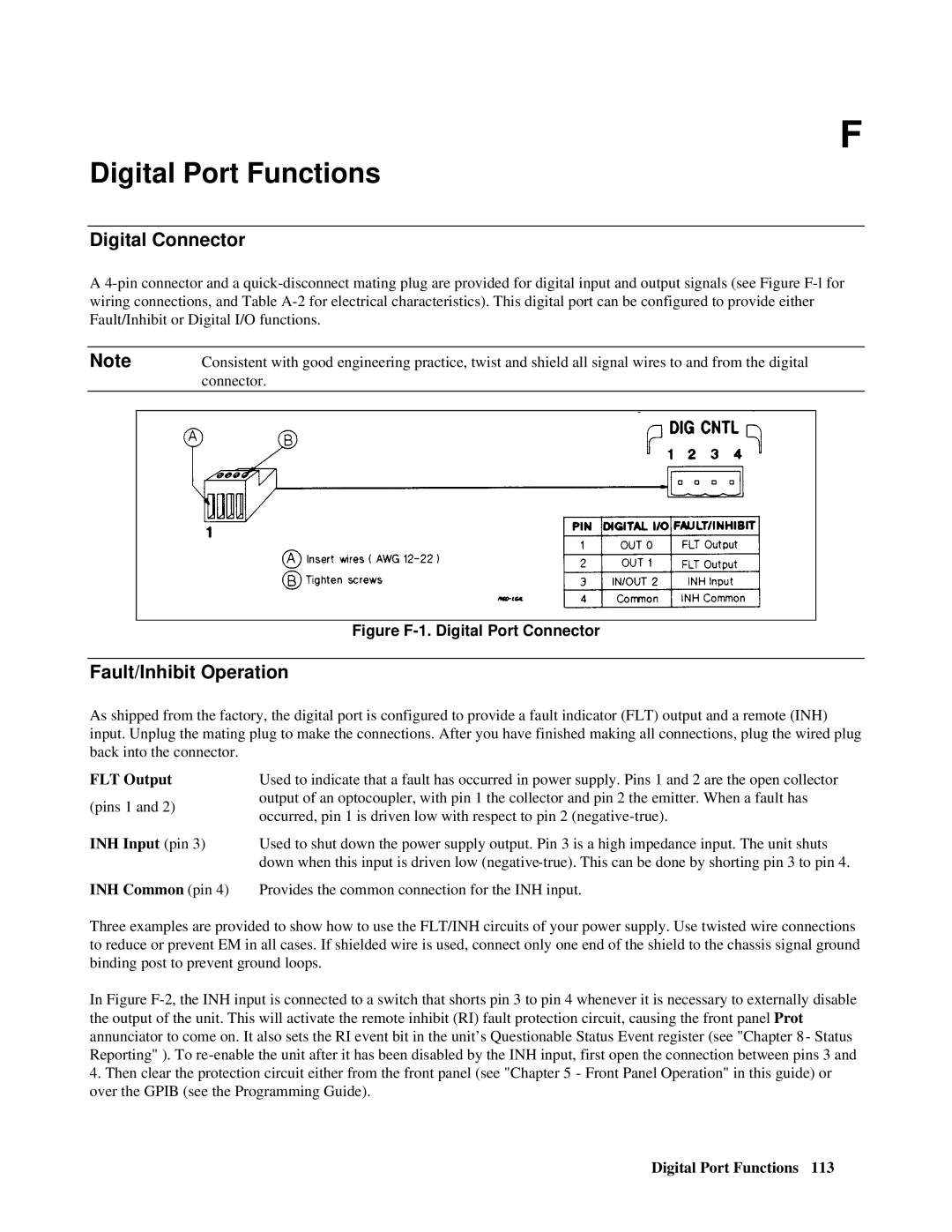
F
Digital Port Functions
Digital Connector
A
Note | Consistent with good engineering practice, twist and shield all signal wires to and from the digital | |
| connector. | |
|
|
|
|
|
|
Figure F-1. Digital Port Connector
Fault/Inhibit Operation
As shipped from the factory, the digital port is configured to provide a fault indicator (FLT) output and a remote (INH) input. Unplug the mating plug to make the connections. After you have finished making all connections, plug the wired plug back into the connector.
FLT Output | Used to indicate that a fault has occurred in power supply. Pins 1 and 2 are the open collector | |
(pins 1 and 2) | output of an optocoupler, with pin 1 the collector and pin 2 the emitter. When a fault has | |
occurred, pin 1 is driven low with respect to pin 2 | ||
| ||
INH Input (pin 3) | Used to shut down the power supply output. Pin 3 is a high impedance input. The unit shuts | |
| down when this input is driven low | |
INH Common (pin 4) | Provides the common connection for the INH input. |
Three examples are provided to show how to use the FLT/INH circuits of your power supply. Use twisted wire connections to reduce or prevent EM in all cases. If shielded wire is used, connect only one end of the shield to the chassis signal ground binding post to prevent ground loops.
In Figure F-2, the INH input is connected to a switch that shorts pin 3 to pin 4 whenever it is necessary to externally disable the output of the unit. This will activate the remote inhibit (RI) fault protection circuit, causing the front panel Prot annunciator to come on. It also sets the RI event bit in the unit’s Questionable Status Event register (see "Chapter 8 - Status Reporting" ). To re-enable the unit after it has been disabled by the INH input, first open the connection between pins 3 and
4.Then clear the protection circuit either from the front panel (see "Chapter 5 - Front Panel Operation" in this guide) or over the GPIB (see the Programming Guide).
